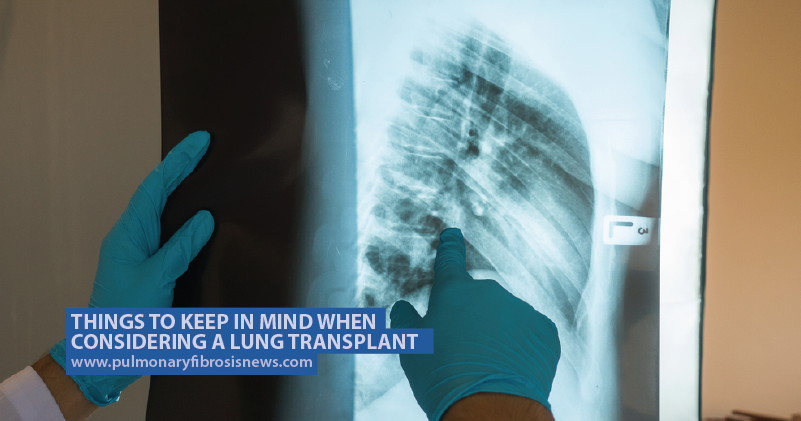Things to Keep in Mind When Considering a Lung Transplant

To be considered eligible for an organ transplant, patients will often go on a long and difficult journey. Candidates are put through a series of tests and actually receiving an organ will include a lot of waiting and hoping. To make the road to transplant a little easier, we’ve put together some advice from the Pulmonary Fibrosis Foundation, so patients know what to expect.
Evaluation
If a patient decides to make themselves a transplant candidate, they’ll have to be evaluated first. Usually, the evaluation team includes a pulmonologist, a transplant surgeon, a transplant nurse coordinator, a transplant social worker, a dietitian, a psychologist, a physical therapist and an insurance coordinator.
The key areas they’ll be looking at are physical and mental health, along with the patient’s support system.
Eligibility
Overall, to be eligible for a lung transplant, a patient ought to be in good health (excluding the lungs), have an ideal BMI, be willing to comply with any prescribed meds and medical recommendations, be aware of how a transplant would affect them psychologically, have a steady support network, be aware of the financial effects (including how it would involve their insurance) among many other factors.
MORE: Is a lung transplant an option for a pulmonary fibrosis patient?
After the Evaluation
After the team has evaluated the patient and made the decision to go ahead with the transplant, the patient will be provided with a lung allocation score (LAS) that will be based on many factors, including age, how severe the disease is, and how key organs are functioning. This LAS will decide the patient’s place on the organ waiting list.
Waiting List
As soon as the patient has been approved, they’ll be put on the list. The wait is one of the hardest parts of the process and can take its toll on the patient’s (and their family’s) mental well-being. It’s important the patient maintains every aspect they were evaluated on, like their healthy lifestyle and their rehabilitation program.
It also may be a good idea to check if the transplant center has a support group. The patient should remember that their transplant team may have to contact them at any time with regards to an available lung, so they will need to be easily contactable.
MORE: Six ways to help you take care of your lungs
Surgery
Lung surgeries of this nature can take anywhere from four to 10 hours. The exact length of surgery will depend on various factors, including whether it’s a single or a double transplant, the patient’s current overall health and the location of the surgery.
After Surgery
There are a lot of steps to follow after a surgery, but even more so for a transplant. The team will be there to monitor any issues that may pop up after the operation. The main thing is to keep an eye on the anti-rejection meds and make sure the patient takes their immunosuppressants on schedule. Caregivers will also want to watch for certain side effects or bad reactions that may occur.
It’s good to keep in mind that a transplant is a huge shock on the body and everyone handles it in different ways and at different paces.
MORE: 10 tips for a healthy recovery following a lung transplant
Pulmonary Fibrosis News is strictly a news and information website about the disease. It does not provide medical advice, diagnosis or treatment. This content is not intended to be a substitute for professional medical advice, diagnosis, or treatment. Always seek the advice of your physician or another qualified health provider with any questions you may have regarding a medical condition. Never disregard professional medical advice or delay in seeking it because of something you have read on this website.







